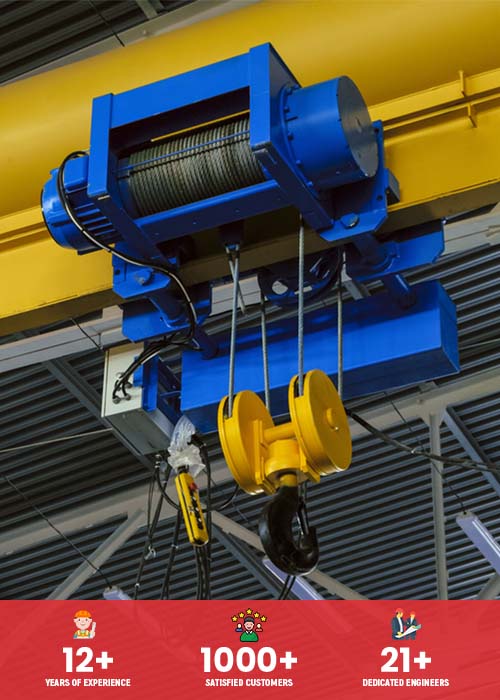The Difference Between Hoists and Cranes
If you are not regularly working with hoists and cranes, it is not possible to understand the differences between the two and their functionalities. However, if you ask the experts of hoist crane manufacturers in India, they can explain many differences between these otherwise seemingly same machines.
What is an overhead crane?
A crane is a sophisticated device used to raise, lower, and transfer large or heavy items. Cranes come with accessories that enable them multidirectional mobility. The hoist, trolley, and bridge actions work together to completely cover your production floor.
What is a Hoist?
A hoist is a device that excels at carrying out a specific task: raising and lowering a load on a vertical axis. Hoists are positioned atop the crane’s main horizontal beam, also known as the bridge girder. When the trolley is attached to the hoist, the hoist can move back and forth across the bridge girder. Wire rope hoists are the best option for loads of 5 tonnes or more, while chain hoists are good for lifting loads below 5 tonnes with little maintenance required. A single rope is used on the rope drum in single-reeved hoists, while two ropes are used on a single drum in double-reeved hoists to achieve real vertical lift. On a single-reeved hoist, minimal hook drift, or lateral movement of the hook, is possible with greater diameter rope drums.
What is a Trolley?
The crane’s trolley is the device used to move the hoist along the bridge girder. To position the hoist above a load, it is moved horizontally along the top or bottom of the bridge girder. Low headroom, regular headroom, and double girder trolleys are the three different categories of trolleys.
What is a bridge?
End trucks are used by cranes to move the bridge along the runway rail, including the hoist, trolley, and girder beams. The third leg of the crane’s multi-directional mobility is added by the bridge motion, which provides complete hook coverage over the width of your building.
Crane electrification: How does a crane run?
The wiring and support system known as a festoon is what powers a trolley and hoist across the bridge. The primary bridge panel, which powers all of the crane’s electronics, receives electricity from the runway busbar. The hoist panel and the bridge drives, which power the hoist, trolley, and bridge drive, are then reached by festoon cables. Most operators use a pendant or radio to control the crane’s movement for best productivity and safety.
How do you choose the right crane components?
The equipment you choose should be compatible with your particular building architecture, from the overall crane package down to the individual components. Understanding the measurement systems used to create specific crane parts can help you make the most of the custom features and options available.
Span :
The breadth of the complete crane is determined by the distance between the centers of the runway beams.
Trolley Gauge :
The distance between the centers of one trolley rail and the other trolley rail in a double girder crane is known as the trolley gauge dimension.
Headroom :
When the hook is lifted to its highest point, the space between the saddle of the hook and the bottom of the trolley wheels is measured. When there is a limited lifting distance, low headroom hoists like the SX low headroom hoist offer the highest level of space efficiency. The C dimension is another name for the headroom.



